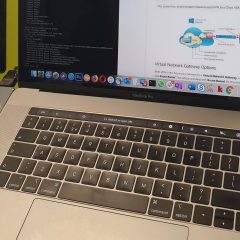VMware ESX – WDS Fails “The network location cannot be reached”
KB ID 0000308 Problem Whilst trying to contact a WDS server from an ESX client machine (though this can happen on a physical machine also). You see the following error, The network location cannot be reached, For information about network troubleshooting, se Windows Help. Solution This is because the WindowsPE image you are using to Capture/Deploy does not have the network drivers for the NIC in the machine you are imaging (At...
Adding Drivers to Images on WDS
KB ID 0000314 Problem Before Server 2008 R2 when we needed to inject drivers into our WDS images we had to do it like this. Now however the process is a lot more elegant! Simply import the drivers into WDS, then inject them into the boot images (Yes the boot images NOT the Windows Images you are deploying!) Solution Add Driver Packages to Image is “Greyed out” If while attempting to add drivers, the option to “Add...
WDS – PXE Boot Error TFTP Timeout
KB ID 0000485 Problem Seen when using WDS on Windows Server 2008 (and 2008 R2). When attempting to PXE boot a client machine, it sucessfully gets an IP address. But it times out at the TFTP stage. This is a common occurance if the WDS server is also a DNS server. It happens on machines that have had the MS08-037 security update installed. Basically the ports that WDS needs are being reserved for DNS. Solution 1. On the WDS server...
WDS – “The Network Path was not found” when adding an Unattend file
KB ID 0000487 Problem Saw this last week, while trying to use an unattended file for the roll out of some machines with WDS. Every time you try and enter a value you get “The network path was not found” error, no combination of file path or UNC path seems to cure the problem. Solution This is a “work around” not a fix, essentially it will not accept any value you put into the path without throwing and error. If...
WDS – Unattended file – Removing /Formatting Drive Partitions
KB ID 0000490 Problem Over the last couple of years I’ve done a lot of imaging of School PC’s I don’t know why but they come with a myriad of different drive and partition configurations. Even big vendors like HP and Dell ship their machines with recovery partitions these days. If you are imaging with WDS this can cause a problem so what I usually want to do is remove all the partitions, create one big one that...





